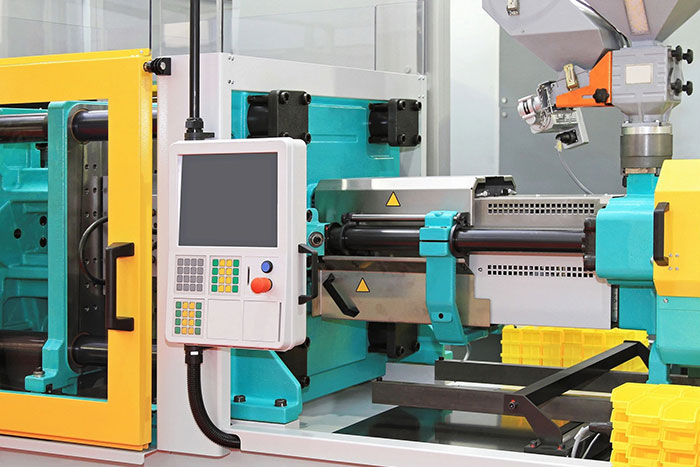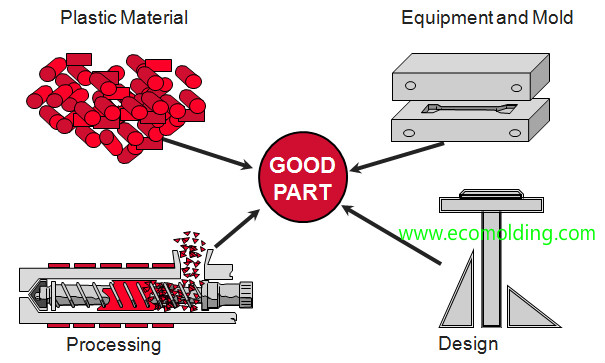The Impact of Plastic Injection Molding on Reducing Production Prices and Waste
The Impact of Plastic Injection Molding on Reducing Production Prices and Waste
Blog Article
Understanding the Essentials of Plastic Shot Molding Procedures
Plastic injection molding functions as a foundation of modern-day production, providing a methodical strategy to producing complicated components with precision. This procedure not just incorporates the fundamental actions of melting and injecting products into mold and mildews yet also includes a nuanced understanding of numerous affecting variables, such as temperature and stress. As sectors progressively require effectiveness and quality, the intricacies of this approach become much more essential. Exploring these crucial components can disclose exactly how even small changes can lead to significant renovations in manufacturing end results, questioning concerning the capacity for advancement in this recognized procedure.
What Is Plastic Injection Molding?
Plastic shot molding is a commonly utilized manufacturing process that transforms thermosetting and thermoplastic materials right into exact and complex forms. This technique is preferred for its ability to create high quantities of identical get rid of phenomenal precision, making it an indispensable technique in different sectors, consisting of automotive, durable goods, and clinical devices.
The process entails melting the picked plastic material and injecting it right into a mold under high stress. The mold, developed to the requirements of the preferred component, allows the molten plastic to take form as it strengthens and cools down. As soon as the product has actually hardened, the mold is opened up, and the ended up part is expelled.
Plastic shot molding uses numerous benefits, including reduced waste, uniformity in manufacturing, and the capacity to include detailed designs that might be challenging with other producing approaches. In addition, it sustains a wide range of products, each providing distinct residential properties that can be customized for details applications. As industries remain to innovate, plastic injection molding remains at the forefront, enabling the advancement of sophisticated products that meet advancing consumer demands.
The Injection Molding Refine
The shot molding process is an innovative strategy that involves a number of crucial phases to create high-quality plastic elements. Initially, plastic pellets are fed into a warmed barrel where they are merged a thick fluid. This molten plastic is after that injected under high stress right into a precision-engineered mold, which forms the material right into the wanted type.
When the mold is filled, the plastic is permitted to strengthen and cool, taking the shape of the mold and mildew tooth cavity. Air conditioning time is critical, as it affects the cycle time and the final residential or commercial properties of the molded component. After adequate air conditioning, the mold opens, and the ended up component is ejected making use of ejector pins.

Materials Utilized in Injection Molding
Various materials can be utilized in the injection molding procedure, each offering special properties that accommodate specific applications. The most typically utilized materials include thermoplastics, thermosetting plastics, and elastomers.

Thermosetting plastics, like epoxy and phenolic materials, undertake a chemical modification throughout the curing procedure, causing a stiff, stringent structure. These products are excellent for applications requiring high heat resistance and architectural honesty, usually used in auto components and electric insulators.
Elastomers, including silicone and rubber-based products, offer flexibility and durability. Their one-of-a-kind residential properties make them appropriate for applications that require flexibility, such as gaskets and seals.
In addition, specialty materials like bio-based plastics and composites are acquiring traction for their environmental benefits and improved efficiency attributes, expanding the extent of injection molding applications in various sectors. Understanding the buildings of these products is crucial for selecting the ideal type for certain jobs.
Benefits of Shot Molding
Shot molding sticks out as an extremely reliable production procedure that uses countless advantages for producing complex get rid of precision. One of the most significant benefits is the capacity to create detailed designs that would be challenging or impossible to attain with various other methods (Plastic Injection Molding). The procedure enables thorough attributes and tight tolerances, guaranteeing premium elements
Additionally, injection molding is known for its rapid manufacturing abilities, making it a perfect option for high-volume manufacturing. As soon as the mold is created, parts can be generated swiftly, decreasing lead times and raising total efficiency. This performance not just lowers production expenses but additionally offers a competitive side out there.
The flexibility of products made use of in shot molding even more click over here enhances its charm. A large range of thermoplastics and thermosetting polymers can be employed, enabling makers to choose products that finest fulfill their certain demands, consisting of flexibility, stamina, and heat resistance.
In addition, the procedure decreases waste, as excess material can commonly be reused and recycled. This sustainability aspect adds to a lowered environmental influence, making injection molding a responsible production selection. In general, the benefits of shot molding make it a recommended approach for lots of sectors.
Elements Impacting Item High Quality
While numerous elements can influence item quality in injection molding, recognizing these elements is essential for achieving ideal outcomes. Secret elements consist of product selection, processing parameters, and mold layout.
Material option plays a crucial duty, as different polymers visit site display one-of-a-kind homes that influence flowability, toughness, and thermal stability. Inadequate material choice can bring about problems such as warping or incomplete filling.
Handling parameters, including cycle, pressure, and temperature level time, have to be meticulously regulated. Variants in these settings can lead to More hints variances in component dimensions and surface finish. For example, exceedingly high temperature levels may trigger degradation of the polymer, while insufficient pressure can result in short shots.
Mold and mildew style is equally important, as it determines the circulation of the molten plastic and the cooling procedure. Improperly made molds might cause unequal cooling prices, leading to residual tensions and dimensional inaccuracies.

Verdict
To conclude, plastic injection molding functions as a critical manufacturing process that enables the efficient manufacturing of top quality components. Mastery of the shot molding process, consisting of the understanding of materials and the influence of various aspects on item top quality, is crucial for attaining optimum outcomes. The benefits of this technique, such as cost-effectiveness and style flexibility, additional emphasize its relevance across multiple sectors, solidifying its condition as a preferred choice for high-volume manufacturing.
Plastic injection molding offers as a keystone of modern-day manufacturing, providing a systematic technique to producing complex parts with accuracy.Plastic injection molding supplies numerous benefits, including reduced waste, uniformity in manufacturing, and the ability to incorporate detailed styles that may be challenging with various other manufacturing approaches (Plastic Injection Molding). As industries continue to introduce, plastic injection molding continues to be at the leading edge, allowing the advancement of advanced products that fulfill progressing customer needs
The injection molding procedure is a sophisticated technique that entails a number of key phases to produce premium plastic components.In verdict, plastic injection molding serves as a crucial manufacturing process that makes it possible for the efficient manufacturing of premium components.
Report this page